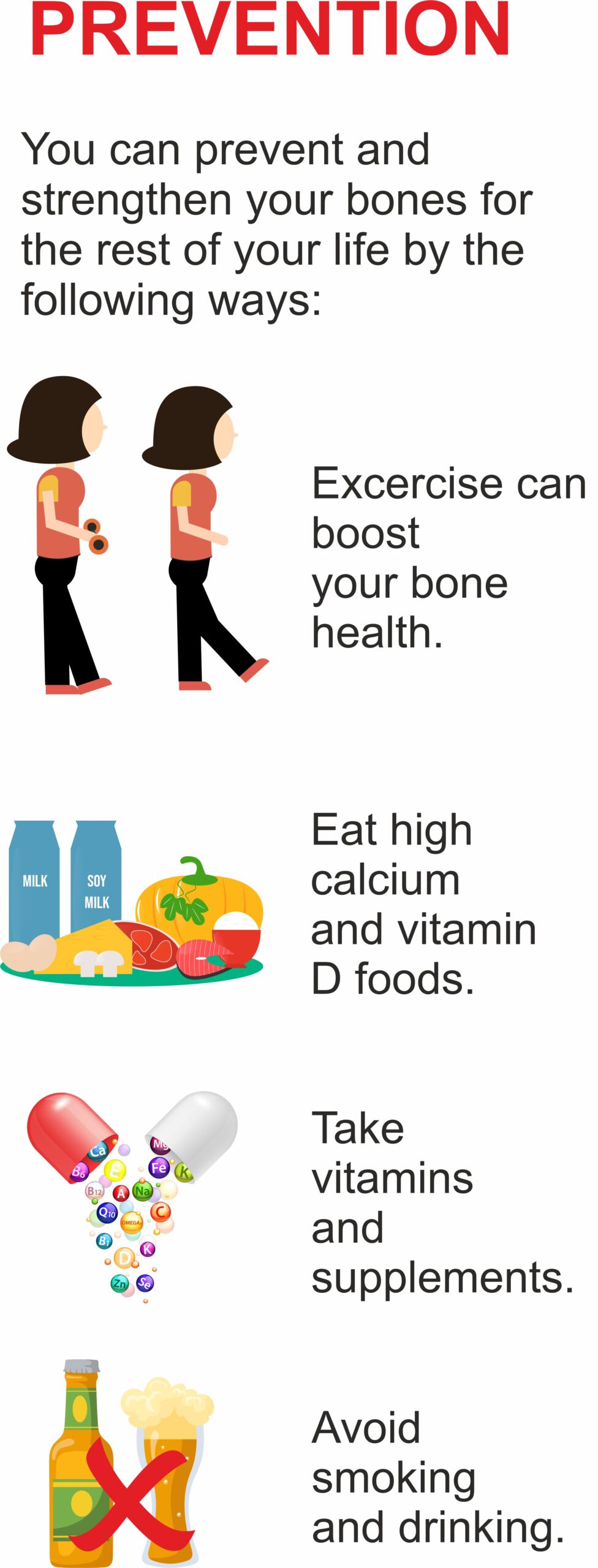Osteoporosis
 Osteoporosis is derived from the Greek word Osteo meaning bone and the old English word Poro meaning porous, therefore meaning porous bone. As the name implies, Osteoporosis is porous bone which has lost the bone density and the structural architecture making it weak and susceptible to breakage. This is a condition where no symptoms are present until a bone breakage i.e., a fracture occurs. It is a silent and slowly progressing disease affecting majority of the older people.
Osteoporosis is derived from the Greek word Osteo meaning bone and the old English word Poro meaning porous, therefore meaning porous bone. As the name implies, Osteoporosis is porous bone which has lost the bone density and the structural architecture making it weak and susceptible to breakage. This is a condition where no symptoms are present until a bone breakage i.e., a fracture occurs. It is a silent and slowly progressing disease affecting majority of the older people.
 The bone is made of many cells of which two cells, Osteoblasts and Osteoclasts are essential for bone growth. Osteoblasts are the bone forming cells and are responsible for new bone formation. Osteoclasts remove old bone so that new and healthy bone can be formed in its place. In young people there are more Osteoblasts therefore more bone growth and around middle age there are equal number of Osteoblasts and Osteoclasts. This results in stable bone. In older people there is more bone destruction than bone growth. This causes reduction in bone density and there is loss of bone structure. Overtime the bone becomes weak and turns porous.
The bone is made of many cells of which two cells, Osteoblasts and Osteoclasts are essential for bone growth. Osteoblasts are the bone forming cells and are responsible for new bone formation. Osteoclasts remove old bone so that new and healthy bone can be formed in its place. In young people there are more Osteoblasts therefore more bone growth and around middle age there are equal number of Osteoblasts and Osteoclasts. This results in stable bone. In older people there is more bone destruction than bone growth. This causes reduction in bone density and there is loss of bone structure. Overtime the bone becomes weak and turns porous.
 Though the ageing process of the bone occurs in everybody, some can have an earlier onset. Hormonal disturbances can cause increased bone destruction. Menopause is a common cause for Osteoporosis, especially early menopause. This also explains why women have more osteoporosis than men. Hyper thyroidism and low testosterone also cause Osteoporosis and correcting these levels will improve the condition. Low calcium and vitamin D also contribute to the bone loss and these levels should be corrected before starting treatment. Autoimmune arthritis like Rheumatoid arthritis, Ankylosing Spondylitis, SLE cause increased bone loss due to longstanding inflammation. Any liver or kidney conditions also cause accelerated bone loss. Inactivity, smoking and alcohol are responsible for bone loss and should be avoided.
Though the ageing process of the bone occurs in everybody, some can have an earlier onset. Hormonal disturbances can cause increased bone destruction. Menopause is a common cause for Osteoporosis, especially early menopause. This also explains why women have more osteoporosis than men. Hyper thyroidism and low testosterone also cause Osteoporosis and correcting these levels will improve the condition. Low calcium and vitamin D also contribute to the bone loss and these levels should be corrected before starting treatment. Autoimmune arthritis like Rheumatoid arthritis, Ankylosing Spondylitis, SLE cause increased bone loss due to longstanding inflammation. Any liver or kidney conditions also cause accelerated bone loss. Inactivity, smoking and alcohol are responsible for bone loss and should be avoided.
 Osteoporosis is asymptomatic unless a fracture occurs. Common sites for fractures are spine, hips mainly the neck of femur and the forearm. Fractures can occur at any site. Osteoporotic fractures do not require much trauma. Minimal trauma such as bending down, coughing or falling from a standing height can cause fracture. The site of the fracture will be painful and depending on the site of the fracture complications occur. When a hip fracture occurs standing and walking will be painful. Spine fracture can cause severe pain with any position. Fracture of the forearm can impair daily activities.
Osteoporosis is asymptomatic unless a fracture occurs. Common sites for fractures are spine, hips mainly the neck of femur and the forearm. Fractures can occur at any site. Osteoporotic fractures do not require much trauma. Minimal trauma such as bending down, coughing or falling from a standing height can cause fracture. The site of the fracture will be painful and depending on the site of the fracture complications occur. When a hip fracture occurs standing and walking will be painful. Spine fracture can cause severe pain with any position. Fracture of the forearm can impair daily activities.
 Though fractures can be detected by X-rays, Osteoporosis with out fractures can be detected by a specialized scan known as DEXA scan. The DEXA scan will assess the bone mineral density, BMD at various sites and compare the BMD to a healthy adult of the same race and gender. This will determine the bone loss which has occurred. This is determined in the form of T and Z scores and treatment will be decided based on the severity of these scores.
Though fractures can be detected by X-rays, Osteoporosis with out fractures can be detected by a specialized scan known as DEXA scan. The DEXA scan will assess the bone mineral density, BMD at various sites and compare the BMD to a healthy adult of the same race and gender. This will determine the bone loss which has occurred. This is determined in the form of T and Z scores and treatment will be decided based on the severity of these scores.
Treatment for Osteoporosis is based on the DEXA scan T and Z scores. If there is any underlying hormonal deficiency, it is to be corrected before starting the treatment. Similarly Calcium and Vitamin D deficiency has to be corrected before the treatment. Smoking and alcohol has to be cut down completely. The duration of the treatment would depend on the treatment response which would be seen in the next scan.
